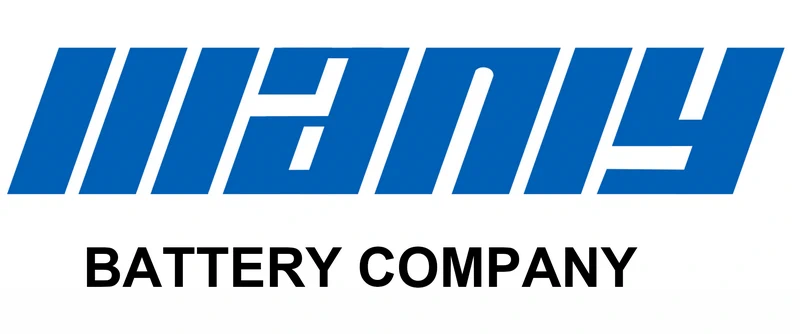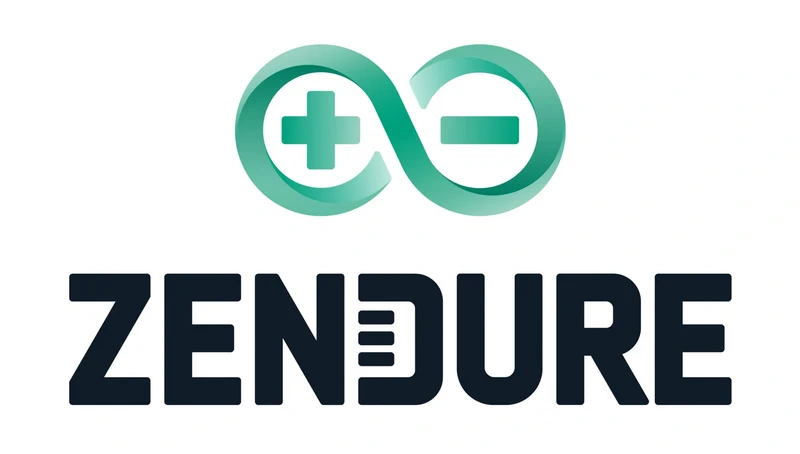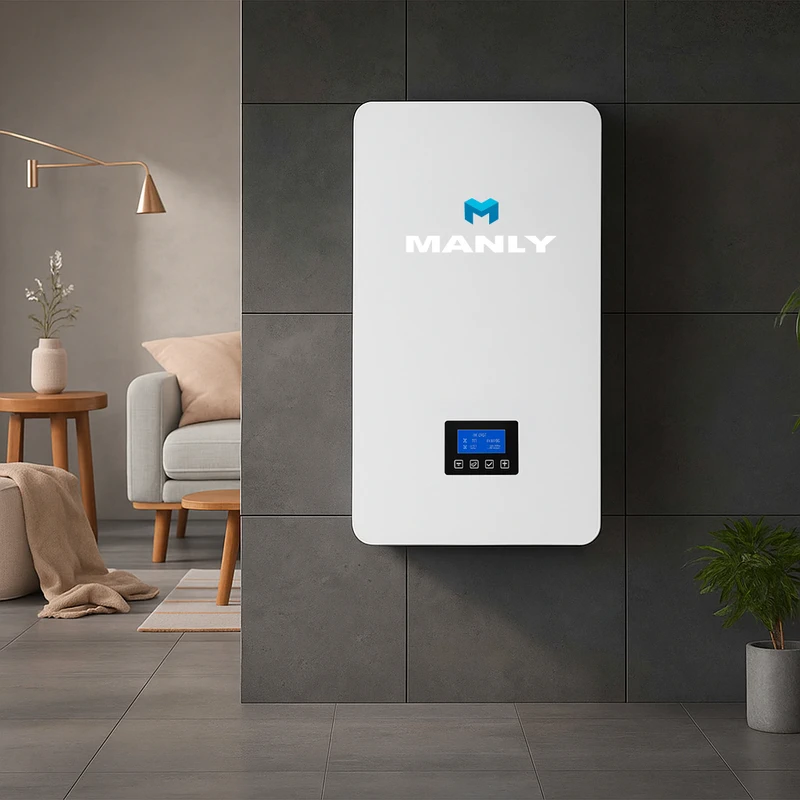What Battery for a 3000W Solar Panel?
Table of Contents
- What Battery for a 3000W Solar Panel?
- Understanding Energy Storage Needs for 3000W Solar Panels
- How to Size the Right Battery for Your Solar Panel System
- Why a 5kWh Battery is Often the Ideal Match
- Choosing the Right Battery for Solar Panel Applications
- Performance Metrics That Matter
- Best Maintenance Practices to Extend Battery Life
- Advantages of Adding a Battery to Your Solar Panel System
- Challenges and Limitations of Solar Battery Storage
- Top Battery Recommendations for 3000W Solar Installations
- 5 Best Battery Recommendations for 3000W Solar Installations
- Conclusion
- FAQ
- Hot Search
- Learn More About Battery
A 3000W solar panel system generates a useful amount of electricity throughout the day, but energy demand often peaks after sunset—just when production stops. To bridge this gap, integrating a battery for solar panel setups has become increasingly important. A reliable Lithium battery allows excess solar energy to be stored and reused during evening hours, improving energy self-consumption and reducing dependence on the grid. Choosing the right storage system involves more than just picking a capacity—it means understanding how much energy is needed at night, how efficient the battery is, and how it integrates with existing equipment. In many cases, a 5kwh battery offers the ideal balance between daily needs, autonomy, and budget. This article explores how to size, select, and maintain storage for 3000W systems, with real-world guidance and trusted solutions from experienced battery manufacturer partners.
Understanding Energy Storage Needs for 3000W Solar Panels
A 3000W solar setup is a popular choice for French homeowners aiming to reduce reliance on the grid. This size can generate around 12–15 kWh per day in optimal conditions, which is enough to cover a significant part of a home’s needs. However, solar production peaks when most people aren’t home. That’s why integrating a battery for solar panel systems becomes vital—it stores energy for later use when demand is highest.
1. Daily Energy Production and Typical Consumption
Electricity from solar panels flows only during daylight hours, but most households consume more electricity in the evening. In summer, this mismatch is manageable, but in winter or cloudy months, production may fall short while evening demand rises.
To balance this, homeowners install a lithium battery to store excess solar electricity produced during the day. This stored energy powers lights, appliances, and heating once the sun sets.
2. Why Storage Is Essential for Self-Consumption
In France, selling unused solar energy back to the grid offers limited financial return. Instead, it’s more profitable to use your own solar electricity.
Adding a battery boosts your self-consumption rate. Without storage, you might consume only 40% of your solar energy. With the right battery, that figure can climb to 70% or higher. This means greater savings, more energy autonomy, and faster return on investment.
3. Peak Demand vs. Night-Time Use
Evening is when French homes use the most electricity—lighting, cooking, entertainment. But by that time, solar panels have stopped working.
Let’s break down typical evening usage:
- Lighting: 100W for 5 hours = 0.5 kWh
- Refrigerator: 20W for 10 hours = 0.2 kWh
- TV and Wi-Fi: 150W for 4 hours = 0.6 kWh
In total, that’s roughly 1.3 kWh needed after sunset. Without storage, this power comes from the grid. With a properly sized battery, you cover it using your own solar.
How to Size the Right Battery for Your Solar Panel System
Choosing the right battery starts with knowing your needs. It’s about matching your night-time consumption with your daily solar surplus and planning for autonomy.
1. Converting Panel Output Into Battery Capacity (Wh to kWh)
To size a battery, first estimate how much electricity you use after dark. Let’s say it’s 1300Wh (or 1.3 kWh). Then consider battery efficiency. Most lithium battery models allow 90% usable capacity.
Here’s the math: 1.3 kWh / 0.9 = about 1.45 kWh
That means a 2 kWh battery covers your nightly needs with some safety margin. For households with higher use or wanting to prepare for winter, sizing up is smart.
2. The Impact of Autonomy Goals on Sizing
If you want full-day autonomy—not just night-time backup—you’ll need more storage. A typical French household uses 8 to 12 kWh per day. A 5kWh battery can’t cover it all, but it offers a strong middle ground: affordable, scalable, and efficient.
This is why many experts recommend starting with a 5kWh battery when pairing with a 3000W solar array. It’s enough to handle daily peaks, protect against outages, and scale as your needs grow.
3. Example Case: Battery Sizing for Evening Consumption
Take a family in Lyon. Their 3000W panels generate 13 kWh/day in summer. Their night-time demand is 1.5 kWh. They install a lithium battery with 2 kWh capacity and 90% depth of discharge—providing 1.8 kWh of usable energy.
By partnering with a trusted battery manufacturer, they ensure their system runs efficiently. Within one year, their self-consumption rate increases from 42% to 68%. That translates to real savings on electricity bills—and more control over their energy.
Why a 5kWh Battery is Often the Ideal Match
For homes using a 3000W solar setup, a 5kWh battery offers a smart and balanced solution. It aligns well with typical French electricity use and provides a reliable buffer for evening and overnight consumption. It avoids overinvestment while maximizing solar benefits. This section helps homeowners understand why this size works especially well for energy independence and cost control.
1. Energy Coverage for Common French Households
In France, many households use between 8 and 12 kWh of electricity daily, with 1.5 to 2 kWh consumed during evening hours alone. With a usable depth of discharge close to 90%, a 5kWh battery delivers about 4.5 kWh of real storage. That’s enough to run essential loads like lighting, refrigeration, Wi-Fi, and media devices throughout the night. It also supports appliances like dishwashers or washing machines during off-peak hours. This capacity suits most residential needs without pushing the budget too far.
2. Balancing Cost, Efficiency, and Daily Use
A 5kWh battery strikes a solid balance between performance and price. While larger systems might sound appealing, they often deliver diminishing returns in regions with reduced winter sun hours. Smaller systems, on the other hand, can leave users overly reliant on the grid. The goal is to match battery size with real-world usage. For most households, 5kWh offers the right blend of independence, storage, and practicality.
3. Practical Return on Investment with 5kWh Battery
When installed properly, a 5kWh battery can raise self-consumption from around 40% to 70% or more. That change often translates into hundreds of euros saved each year, particularly as grid electricity prices rise. Over time, the investment pays off—not just in euros, but in energy security. Partnering with a trusted battery manufacturer ensures access to warranties, durable materials, and compatibility with inverters or solar controllers.
Choosing the Right Battery for Solar Panel Applications
Choosing a battery for solar panel systems means more than comparing prices. It requires an understanding of performance, safety, and how well a battery will work with your 3000W setup. Among the available technologies, lithium battery models—especially LiFePO4—consistently offer superior results in residential settings.
1. Lithium Battery vs. AGM, GEL, and Lead-Acid: What Fits 3000W Best?
Several battery chemistries serve solar users in France, but their long-term value differs:
- Lead-acid batteries offer low upfront cost but come with bulk, limited lifespan (300–500 cycles), and low depth of discharge.
- AGM models improve on these with better cycle life and discharge, yet still need careful use.
- Gel batteries provide better safety and deeper discharge but take longer to charge.
- Lithium battery types—especially LiFePO4—deliver the best mix: 80–90% usable capacity, 3000–6000 cycles, and over 90% energy efficiency.
For daily charging and discharging in a 3000W system, lithium remains the most cost-effective over time.
2. Pros and Cons: Safety, Maintenance, Weight, and Life Span
| Battery Type | Lifespan (Cycles) | Depth of Discharge | Maintenance | Weight | Safety |
|---|---|---|---|---|---|
| Lead-acid | 300–500 | 30–50% | High | Heavy | Moderate |
| AGM | 600–800 | 50–60% | Medium | Heavy | Moderate |
| Gel | 800–1200 | 60–70% | Low | Heavy | Moderate |
| LiFePO4 | 3000–6000 | 80–90% | Very Low | Light | Very Safe |
LiFePO4 batteries stand out for everyday solar use. They work with modern hybrid inverters, are lightweight, and need little to no maintenance.
3. Focus on LiFePO4 for Long-Term Performance
If your goal is to run your system reliably for a decade or more, LiFePO4 technology offers the best value. These lithium battery types handle temperature changes well, avoid thermal runaway, and lose little capacity over time. They also outperform older cobalt-based chemistries in terms of safety and lifecycle.
In France, many solar adopters now seek out battery for solar panel options that use LiFePO4, both for environmental reasons and for cost-effectiveness. Choosing the right battery manufacturer—one that offers verified safety certifications and performance guarantees—ensures long-term satisfaction with your investment.
Performance Metrics That Matter
Choosing the right battery for solar panel systems goes far beyond price or brand name. For homeowners in France aiming to maximise energy self-sufficiency and long-term savings, understanding the battery’s technical performance is essential. This section helps you navigate the most important metrics to make an informed decision.
1. Depth of Discharge (DoD) and Usable Capacity
Depth of Discharge (DoD) refers to how much energy a battery can release before it must be recharged. A deeper DoD means more usable energy per cycle, which is crucial when sizing storage for your solar system. Most Lithium battery models allow 80–100% DoD, compared to 30–50% for lead-acid batteries.
Let’s say you install a 5kWh battery with 90% DoD. That gives you 4.5kWh of usable power—enough to cover essential appliances during the night. Choosing a battery with high DoD means fewer units are needed for the same level of energy backup.
Tip: Always calculate usable capacity, not just total capacity, especially if your daily solar surplus is limited.
2. Battery Efficiency: Round-Trip Loss and Charge Time
Every battery loses a portion of energy during storage and discharge. That’s called round-trip loss. Efficient models—typically lithium-based—have 90–95% efficiency, meaning almost all the energy stored is reused.
Charge time is another key factor. Faster-charging batteries better capture solar production during peak hours. For instance, modern Lithium battery systems often fully charge in under 3 hours, while older lead models may need 8 hours or more, limiting their usefulness in variable weather.
Technical benchmark:
Round-trip efficiency: >90% (lithium)
Full charge time: 2–4 hours (lithium), 6–10 hours (lead)
3. Discharge Rate vs. Inverter Compatibility
A mismatch between your battery and inverter can lead to serious performance bottlenecks. Each inverter requires a certain minimum discharge rate (in kilowatts) to operate properly. If your battery can’t meet that power output, devices won’t run as expected.
For example, pairing a 3kW inverter with a battery that only provides 2kW of continuous discharge means your heating system, lights, or even coffee machine might shut off at peak use.
Before buying, check:
Continuous and peak discharge rates on the battery spec sheet
Compatibility with your inverter model (or micro-inverter, if used)
Best Maintenance Practices to Extend Battery Life
A solar battery isn’t just a one-time investment—it’s a long-term energy partner. Proper care ensures your system delivers consistent performance across seasons. Whether you’re using a Lithium battery or an older lead-acid unit, follow these proven maintenance steps to extend its lifespan and reliability.
1. Regular Checks and Seasonal Care
French homes often experience significant temperature swings, especially in rural or off-grid areas. That’s why seasonal inspections are essential.
Every two weeks:
Clean the battery casing with a soft, dry cloth
Check for loose wires or signs of corrosion
Ensure adequate ventilation in the storage room (especially in summer)
During winter:
Insulate outdoor batteries to prevent power loss from cold
Use thermal blankets or passive heating for Li-ion models installed in unheated garages
For lead-acid types:
Open the caps and inspect electrolyte levels
Add distilled water if plates are not fully submerged
2. Avoiding Over-Discharge and Overheating
Even the most robust Lithium battery can suffer if used improperly. Two key risks to watch for:
Over-discharge: Draining a battery below its safe DoD threshold shortens its cycle life.
Overheating: Batteries placed in direct sunlight or sealed enclosures without airflow risk permanent capacity damage.
Install a battery management system (BMS) or choose batteries with integrated smart monitoring. These tools prevent overuse and signal anomalies in real-time, often via mobile apps.
Best practices:
Maintain charge levels above 20% for lead-acid
Keep lithium batteries between 10°C and 30°C
3. Manufacturer Warranty and Cycle Life Expectations
Battery warranties aren’t just marketing—they reflect expected durability based on real-world usage. Look for brands that back their products with solid guarantees aligned with expected cycle life.
On average:
Lead-acid: 500–1,000 cycles (3–6 years)
Lithium battery: 3,000–6,000 cycles (10–15 years)
Top-tier battery manufacturer warranties cover at least 10 years or 70–80% remaining capacity. Always read the fine print: some warranties are voided if the battery is installed outdoors without temperature protection.
When comparing batteries, check:
Cycle life (full charge–discharge cycles)
Years of coverage
Minimum retained capacity at end-of-life
Advantages of Adding a Battery to Your Solar Panel System
For homeowners across France considering energy independence and reduced electricity bills, adding a battery for solar panel systems has become an increasingly practical and forward-thinking decision. This section outlines the core benefits of integrating a lithium battery into your solar setup, with insights tailored to French usage patterns, system sizes, and energy regulations.
1. Increased Energy Independence
Installing a battery empowers your home to use solar electricity when you actually need it—not just when the sun shines. During peak daylight hours, your panels may produce more than you consume. Instead of feeding this excess into the grid at low compensation rates, your lithium battery stores it for the evening or cloudy periods.
In typical French households, a 5kWh battery can support essentials like lighting, internet routers, and refrigerators overnight. This cuts your reliance on the public grid and insulates you from volatile energy prices, especially during off-peak billing periods.
2. Reduced Reliance on the Grid
In many regions of France, especially in semi-rural or mountainous zones, power interruptions or weak grid infrastructure remain a concern. A solar battery mitigates this by ensuring constant electricity availability for critical appliances.
Modern lithium battery systems also feature smart energy management tools, which optimize when and how energy is stored and released—maximizing autonomy without compromising stability.
3. Maximized Return from Solar Energy Investment
Without a battery, much of the solar energy generated may be exported to the grid at feed-in tariffs significantly lower than what you pay to buy electricity back. With a battery, however, your system stores excess energy for your own use, increasing your direct self-consumption rate.
This means better value for every watt your system produces. It also offers a tangible financial advantage, as grid-supplied electricity prices in France are expected to rise further in the coming years.
A battery-equipped system transforms solar from a partial to a complete solution, helping you use more of what you generate and improving long-term savings.
Challenges and Limitations of Solar Battery Storage
While solar battery storage offers real benefits, it also presents several challenges that French consumers must evaluate carefully before deciding. This section breaks down key limitations, cost factors, and regional considerations based on real market data and usage scenarios.
1. High Initial Investment
One of the most common barriers is cost. A quality lithium battery system suitable for residential use—such as a 5kWh battery—can cost between €4,500 and €8,000 when factoring in installation, battery management systems, and applicable taxes.
While France offers incentives such as the “prime à l’autoconsommation,” the initial outlay remains significant. This makes accurate system sizing and return-on-investment planning essential.
2. Limited Winter Solar Input in France
In northern and western regions of France, winter sunshine is scarce. Solar generation may drop by more than 60% compared to summer months. In these cases, your battery may not fully recharge, limiting its usefulness for nighttime consumption.
A larger panel array or hybrid system (combining solar with grid or generator support) might be necessary to offset this seasonal drop.
3. ROI Timeframe and Realistic Expectations
Contrary to some marketing claims, battery payback is gradual. Based on current electricity tariffs and average self-consumption increases, the payback period for a lithium battery can range from 8 to 12 years.
To get a clear picture, track your household’s real energy usage. Tools like Linky meters or smart energy apps can help you determine if your generation and storage patterns align with your goals. Partnering with a reputable battery manufacturer or solar engineer ensures your setup is technically sound and financially smart.
Top Battery Recommendations for 3000W Solar Installations
1. LiFePO4 as the most durable and efficient option
When designing a solar energy system around a 3000W photovoltaic array, the Lithium battery—more specifically, the LiFePO4 (Lithium Iron Phosphate) variant—stands out as the most durable and efficient choice available on the French market today. These batteries typically last between 10 and 15 years and deliver more than 3000 deep charge-discharge cycles, outperforming traditional AGM and lead-acid alternatives in both lifespan and performance.
LiFePO4 technology offers a high depth of discharge (DoD), often between 80% and 100%, which allows users to access nearly the entire nominal capacity without accelerating battery degradation. For homeowners aiming to store surplus solar energy for overnight use, a 5kWh LiFePO4 battery ensures reliable power for essential appliances and helps reduce dependence on the grid.
2. Modular systems for future expansion
Many French households now consider modular energy storage solutions to stay flexible as energy needs grow. Modular batteries let users start with a single 5kWh battery and scale up later by adding additional units—without replacing the entire system. This makes modular systems an ideal match for evolving installations, such as upgrading from a 3kWc to a 6kWc solar array.
LiFePO4 modular systems are easy to integrate with most battery for solar panel inverters used in France, whether centralized or micro-inverter based. This flexibility allows future upgrades without requiring extensive reconfiguration.
3. Manufacturer focus: Why choose a trusted battery manufacturer
Selecting the right battery manufacturer plays a critical role in the reliability and safety of your solar system. A high-quality manufacturer not only ensures better performance through premium cell technology, but also provides warranties, technical support, and compliance with EU standards.
Trusted manufacturers typically offer:
- Safety features such as built-in BMS (Battery Management System)
- Certifications like CE, UN38.3, and IEC62619
- Local or EU-based after-sales support
Imported brands such as MANLY Battery have gained significant traction in the French and European markets by combining competitive pricing with robust quality assurance. Their products are built for durability and are often customizable, making them a compelling choice for residential and semi-professional installations.
5 Best Battery Recommendations for 3000W Solar Installations

Huawei LUNA
Huawei’s LUNA2000 series is a modular and scalable energy storage system built for residential installations. Storage capacity starts at 6.9 kWh and can be expanded to over 20 kWh by connecting multiple units in parallel. Its Lithium battery technology ensures safety, thermal stability, and consistent long-term performance. LUNA is also compatible with Huawei’s single-phase and three-phase inverters, making it flexible for most French homes.
Key Features:
- Modular design allows up to four units in parallel
- Optional backup functionality for power outages
- Long lifecycle with over 6,000 cycles
- LiFePO4 chemistry for safety and durability
- Works with single and three-phase Huawei inverters
- Backed by a 15-year warranty

MANLY 5kWh Battery
The MANLY 5kWh battery is a high-performance, wall-mounted battery for solar panel systems, ideal for residential or small business use across France. Built with premium 48V 100Ah LiFePO4 cells, this system delivers not only exceptional safety and lifespan but also superior energy efficiency. Whether you live in a city apartment or a countryside farmhouse, this battery provides stable, long-term energy storage with minimal maintenance.
Built for Performance and Longevity
At the core of this system is MANLY’s A-grade Lithium battery technology. With over 5,000 charge-discharge cycles at 80% depth of discharge (DOD), this unit ensures more than a decade of reliable operation. Its 95% usable energy efficiency maximizes the output from your solar panels, helping you use more of what you generate and buy less from the grid.
The battery’s working voltage range of 40.0V to 58.4V supports smooth integration with common 48V inverter systems used in French solar installations. Additionally, the natural air cooling system and IP56+ waterproof housing make it resilient in both indoor and outdoor conditions—from snowy Alpine towns to humid coastal homes in Brittany.
Easy to Install and Expand
One major advantage is the plug-and-play design. MANLY’s 5kWh battery connects easily with most major inverter brands on the French market using CAN, RS485, or RS232 communication protocols. For growing energy needs, up to eight units can be connected in parallel, scaling the total capacity to 40kWh—enough for high-demand off-grid homes or energy-resilient microgrids.
Real-Time Monitoring
An optional LCD screen allows users to view detailed system data in real-time, including:
Current working status
Battery voltage
Charge/discharge cycles
Error diagnostics
This visual feedback helps you optimize battery performance and ensures safer daily operation.
Complete Protection with Smart BMS
MANLY’s built-in Battery Management System (BMS) includes:
Overcharge and over-discharge protection
Short circuit and overcurrent protection
Temperature control
Cell balancing function
This intelligent system protects the battery under all operating conditions, automatically adjusting its performance for safety and efficiency.
Compact Design, Heavy-Duty Output
Dimensions: 640 x 430 x 185 mm
Weight: 56 kg
Discharge Current (Continuous): 100A
Charging Current (Recommended): 50A
Peak Inverter Output Compatibility: 5kW continuous, up to 10kW surge
Despite its compact frame, this 5kWh battery delivers industrial-grade performance, supporting heavy household loads such as water heaters, washing machines, or even electric vehicle charging—when paired with a suitable inverter.
Backed by a Strong Warranty
MANLY offers a 5-year warranty on this model, with options to extend coverage based on project size or special configurations. As a trusted battery manufacturer, MANLY also provides technical support and OEM customization for local solar installers and distributors in France.

Enphase 5P
The Enphase IQ 5P battery is one of the most advanced battery for solar panel solutions currently available in France. Designed to pair seamlessly with Enphase’s microinverter systems, it features six built-in IQ8D-BAT microinverters and delivers up to 3.84 kVA of output power. What makes this battery particularly appealing to French homeowners is its plug-and-play design and wall-mounted flexibility—indoors or outdoors. Built with ultra-safe Lithium battery (LiFePO4) cells, the IQ 5P minimizes thermal risks while offering a long cycle life of over 6,000 full charge-discharge cycles.
Key Features:
- Plug-and-play installation, suitable for outdoor/indoor use
- Over 6,000 cycles with high depth of discharge
- Low-voltage DC system for improved safety
- Compatible with Enphase microinverter setups
- Real-time energy monitoring via mobile app
- 15-year industry-leading warranty

Qcells Q.HOME CORE
Qcells offers a complete, all-in-one solution with its Q.HOME CORE system, integrating both storage and inverter in a compact and elegant setup. The system includes a 4.6kW Q.VOLT inverter and a 6.86kWh Q.SAVE battery module. This modular system supports expansion up to 20.5kWh and offers both AC-coupled and hybrid DC-coupled configurations. Built with premium Lithium battery cells, it ensures high efficiency and adaptability.
Key Features:
- Integrated hybrid inverter and battery storage
- Expandable up to 20.5kWh by stacking three units
- AC and DC coupling options for flexible integration
- Fast installation with plug-and-play configuration
- Slim and aesthetic design ideal for French homes
- 15-year warranty coverage

Zendure AB2000
The Zendure AB2000 is a flexible and modular Lithium battery solution designed for residential solar energy storage. Built with LiFePO₄ (lithium iron phosphate) cells, this battery offers excellent safety and long-term durability. It comes with a storage capacity of 1,960Wh, but its real strength lies in its expandability. You can connect up to four units together, achieving up to 7,840Wh—enough to cover high daily consumption for a 3kW solar panel setup, especially during winter or cloudy days.
Key Features:
Technology: Advanced LiFePO₄ chemistry for safer operation.
Durability: Rated for over 6,000 cycles at 70% capacity, translating to more than 10 years of use for most users.
Scalability: Stack up to 4 units for larger storage needs.
Temperature Tolerance: Operates between -20°C and 50°C, ideal for both cold winters and warm southern climates.
Water and Dust Protection: IP65 rating ensures the battery is ready for indoor or outdoor use.
This battery suits those who want a modular, reliable power source that can grow with their energy needs. Its robust weather tolerance and long cycle life make it appealing to homeowners in rural areas or those with seasonal solar variation.
Conclusion
Adding a Lithium battery to a 3000W solar installation transforms the system from a daytime-only solution into a round-the-clock energy source. A well-chosen storage unit increases self-consumption, reduces electricity bills, and enhances energy independence. The 5kwh battery stands out as a practical choice, offering enough usable capacity for evening use without overcomplicating the setup. Thanks to modern design, safety features, and long service life, these batteries perform reliably across a wide range of environments and usage patterns. Selecting a trusted battery manufacturer ensures quality, compatibility, and long-term support. For those seeking an efficient and future-ready battery for solar panel use, the right storage system is a smart step toward greater control, stability, and long-term value.
FAQ
1. What are the best batteries for solar panels?
The best batteries for solar panels are lithium batteries, especially LiFePO4 (Lithium Iron Phosphate) models.
They offer high efficiency, long lifespan, and low maintenance. For French homes with a 3000W solar system, a 5kWh lithium battery provides the right balance between energy autonomy and cost.
2. Which battery is best for storing solar energy?
A 5kWh lithium battery is often the best choice for storing solar energy in residential setups.
It stores enough power for evening use, works well with most inverters, and supports up to 90% usable capacity. Lithium batteries also charge quickly, making them ideal for daily solar storage.
3. Which solar battery lasts the longest?
LiFePO4 (Lithium Iron Phosphate) batteries last the longest, with up to 6,000 charge cycles.
This means over 10 to 15 years of daily use. They are safer, more stable in temperature changes, and degrade slower than lead-acid or gel batteries—making them perfect for long-term investment.






